What varieties of dwarf pears should I plant in my dacha?
Columnar pears are practically no different from their tall counterparts. The difference can only be observed in the size of the tree and the shape of the crown. The fruits are formed on small branches. This is well reflected in the description of the best varieties of dwarf pears with photos and reviews.
You need to plant varieties so that the fruits ripen at different times.There should be twice as many winter varieties as summer varieties, since the period of consumption of late fruits is longer.
| Content:
|
|
Most varieties of low-growing pears produce a fragrant harvest already 2-3 years after planting the seedling. The trunks are strewn with fruits. |
Dwarf varieties have many positive properties:
- compact dimensions;
- in a small area you can place several pear trees of different varieties;
- good winter hardiness;
- high productivity;
- use as decorative elements in landscape design;
- ease of care.
There is also a negative indicator of this variety. The lifespan of dwarf pears is only 10-15 years.
The variety of varieties of columnar pears will allow them to be grown in all regions.
Early (summer) varieties of columnar pears
For cold regions, varieties with early ripening are suitable so that the fruit has time to ripen.
Veselinka
|
Small fruits with excellent taste. Veselinka is recommended for cultivation in Western and Eastern Siberia. Fruiting occurs in 4-6 years. |
- Culture height: 2.5 m. Columnar crown shape.
- Pollinators: Malinovka, Nevelichka and Krasnoyarsk large.
- Fruit ripening time: August.
- Productivity: 16 kg.
- The shape of the fruit, weighing 30-60 g, is pear-shaped with a wide base. The skin is green with a dark red blush on most of the surface, thin. The pulp is juicy, medium density, aromatic. The taste is sweet, with notes of honey.
- Immunity to scab is high.
- Frost resistance: -36°C. Climate zone: 3.
“Veselinka has been growing in my yard for several years now. And what can I say, the variety is resistant to diseases and low temperatures - and these are wonderful qualities.The fruits should be eaten fresh. Pears have a wonderful taste with a hint of honey.”
Sweet beauty
|
An early ripening variety with tasty and aromatic fruits. The culture is undemanding to care, tolerates frost well and confidently fights diseases. The harvest can be obtained in the 3rd year after planting. |
- Tree height: 2.7 m. Columnar crown shape.
- Pollinators are not needed.
- Fruit ripening period: July-August.
- Productivity: 12-16 kg.
- The shape of the fruit, weighing 200-250 g, is pear-shaped. The skin is golden yellow with a red blush, dense. The pulp is creamy, juicy, aromatic. The taste is sweet, dessert.
- There are no problems with diseases due to high immunity.
- Frost resistance: -38°C. Climate zone: 3.
“For many years I have been growing columnar pears in my summer cottage. I have several varieties, but my favorite is Sweet Beauty. I like the juiciness and excellent taste of the fruit. With proper care, including fertilizing, pruning, and insulation before winter, the trees will annually delight you with a large harvest, beautiful and tasty pears.”
White-red early
|
In the photo there is an early White-red Pear. The variety is valued for its ease of care, winter hardiness and undemandingness to soil composition. |
The fruits of this variety are among the best in taste among early ripening ones. The crop begins to bear fruit 2 years after planting. Prefers sunny places.
- Tree height: 1.5-2.5 m. Columnar crown diameter: 40 cm.
- Pollinators: Summer Duchess, Decorah.
- Fruit ripening time: August.
- Productivity: 15 kg.
- The shape of the fruit, weighing 150-180 g, is pear-shaped, elongated. The color of the skin is yellow-red. The pulp is juicy, with a wine flavor and pear aroma.
- Frost resistance: -32°C. Climate zone: 4.
“I consider the white-red early pear to be the most elegant variety.The elongated fruits are covered with yellow-reddish skin. The tender, sweet pulp has a bright pear aroma and a wine aftertaste.”
Flute
|
Winter-hardy variety with beautiful and tasty fruits. It begins to bear fruit at 3-4 years. Transportability is excellent. Universal application. |
- Tree height: 2 m. The crown is pyramidal.
- Pollinators: Decora, Veselinka.
- Fruit ripening period: September. Fruits are stored for up to 3 months
- Productivity: 10-15 kg.
- The shape of the fruit, weighing 170 g, is traditional, pear-shaped. The skin is yellow with an orange blush on the sunny side. The pulp is juicy, without astringency, with a nutmeg aroma. The taste is dessert, sweet.
- The flute successfully resists diseases and pests.
- Frost resistance: -30°C. Climate zone: 4.
“The Flute variety produces very beautiful fruits that are pleasing to the eye. At the same time, they are juicy and tasty, ideal for preparing dried fruits and canning. When choosing this variety for planting, you need to remember that it needs special protection in the first years of life.”
G-322
|
The variety, which has not yet been named, is early ripening and frost-resistant. Characterized by a stable, annual harvest. The first fruits can be tasted 3-4 years after planting. |
- Tree height: 2-3 m. The crown is narrow, compact.
- Pollinators are not needed.
- Fruit ripening time: early August.
- Productivity: 12 kg.
- The shape of the fruit, weighing 120-250 g, is classic, pear-shaped with ribs. The color of the skin is yellow with a blurred blush. The pulp is juicy and grainy. The taste is sweet.
- The variety is resistant to diseases and pests.
- Frost resistance: -30°C. Climate zone: 4.
“I liked the fact that the G-322 pear tree takes up very little space on the site and it is very easy to harvest from it. The fruits are great for jam and compote.Fresh pears are also very tasty, but they spoil faster than we would like.”
Decor
|
The culture is unpretentious in care, undemanding to the composition of the soil. The Decor variety is valued for its pleasant aroma and sweet taste of fruits. |
- Tree height on a dwarf rootstock: 2-2.5 m. Columnar crown.
- Pollinators: Chizhovskaya, Flute, Memory of Yakovlev, Lada.
- Ripening time: end of August.
- Productivity: 15-20 kg.
- The fruits are large, weighing up to 250 g. The shape of the fruit is round-oval. The skin is colored rich yellow. The pulp is light cream, juicy with a bright aroma.
- Immunity to diseases is high.
- Frost resistance: -32°C. Climate zone: 4.
“I planted the Decorah pear last spring, but didn’t have high hopes. The weather was bad, and there were recurrent frosts. However, the tree took well and bloomed that same year, but all the flowers were removed. By winter it was covered and mulched with humus. Despite the severe frosts, the tree was not damaged. In the summer I was pleased with the first harvest. The pears are large, juicy, but slightly tart, as described. I haven’t noticed any particular problems in growing.”
Prominent
|
Late summer variety. Has high consumer qualities. Fruiting begins 2-3 years after planting. |
Fruits ripen at different times, fruiting is extended. Once picked, pears are not stored for long.
- Tree height: 2 m.
- No pollinators required.
- Fruit ripening time: October.
- Productivity: 20-30 kg.
- The shape of the fruit, weighing 150-170 g, is pear-shaped, elongated. The surface of the fruit is lumpy. The main color is greenish-yellow with a bronze blush. The pulp is white, juicy. The taste is sweet and sour.
- Immunity to diseases and pests is high.
- Frost resistance: –28°C. Climate zone: 5.
Middle (autumn) varieties
In the southern regions, it is advisable to plant varieties with late ripening periods along with early ones. This is due to the length of the warm season.
Honey
|
An unpretentious pear with beautiful fruits. The crop is winter-hardy for growing in the middle zone and is not demanding on soil composition. Ripe fruits do not fall off the tree for a long time and are easily transported. |
- Tree height: 2 m. Columnar crown shape.
- Pollinators: Miraculous, Tauride, Bere Bosc, Bere Ardanpon.
- Fruit ripening dates: from September 10. The harvest is stored for 3-4 months.
- Productivity: 30 kg.
- The shape of the fruit, weighing 320-400 g, is pear-shaped, shortened, unequal. The color of the skin is green-yellow with a bronze blush. The pulp of the Honey Pear is tender, oily, and aromatic. The taste is sweet with a honey aftertaste.
- Immunity to scab is high.
- Frost resistance: -25°C. Climate zone: 5.
“My Honey has been wintering well for eight years now, it doesn’t get sick, but for preventative purposes I spray it “for company” with other plantings. Every year I collect a large harvest: it’s enough to put it in the cellar - it lies until mid-winter, and cook jam.”
Autumn Dream
|
A productive variety with medium-sized fruits. According to gardeners, one of the best autumn varieties. |
It has good winter hardiness and is suitable for growing in Siberia and the middle zone. The purpose is universal. The trees begin to bear fruit in the 3rd year.
- Tree height on a dwarf rootstock: 1.5-2 m. The crown is pyramidal, sparse.
- Pollinators: Sanremi, Flute, Delight.
- Fruit harvesting time: end of August. Consumption - until November.
- Productivity: 20 kg.
- The shape of the fruit, weighing 100 g, is ovoid. The skin is greenish-yellow; during storage, a slight blush appears. The pulp is semi-oily, juicy, white. The taste is sweet with sourness, aromatic.
- The variety is resistant to scab and mycoses.
- Frost resistance: –30°С. Climate zone: 4.
“I like Autumn Dream for its small fruits, from which I make delicious compotes and wonderful jam.”
Night-Vert
|
A variety with large fruits. Fruiting begins in the 2nd year. With average winter hardiness, the variety is suitable for the southern regions. |
Night-vert has good stable yield. Universal use: juices, jams, compotes, fresh consumption.
- Tree height: 1.5-2 m.
- Pollinators: Honey, G-2, Guidon.
- Fruit ripening time: first half of September. The harvest can be stored for 1-2 months.
- Productivity: 7-10 kg.
- The shape of the fruit, weighing 200-250 g, is traditional. The skin is green-yellow with a pink blush on the southern side. The pulp is juicy and melting. The taste is sweet with lemon sourness, with a berry aftertaste.
- Immunity to diseases and pests will be better if seasonal preventive measures are not neglected.
- Frost resistance: -25°C. Climate zone: 5.
“I love the Night-vert variety for its early fruiting, beautiful and tasty fruits. The harvests are stable and regular.”
Sanremi
|
A self-pollinating, winter-hardy variety that winters well in central Russia. The culture is unpretentious in care and is not demanding on the composition of the soil. |
The first harvest can be harvested in the second year after planting. Pears tolerate transportation well. The use of the fruit is universal.
- Tree height: 1.8-2 m. The crown is vertical, of medium density.
- Pollinators are not needed.
- Fruit harvest time: early October. The harvest is stored for 2 months in a cool place.
- Productivity: 8-11 kg. Fruiting is annual.
- The shape of the fruit, weighing 400 g, is round. The skin is light green without blush. The pulp is white, juicy, aromatic. The taste is sweet with a slight sourness.
- The Sanremi variety rarely gets sick and is damaged by harmful insects.
- Frost resistance: -32°C. Climate zone: 4.
“I learned about the variety thanks to a description and photo on the Internet. I liked the reviews from gardeners. I bought a seedling at a nursery. The first fruits were tasted in the 3rd year after planting. I really like the taste and appearance of the fruit.”
Zarechnaya
|
Early autumn semi-dwarf variety with good frost resistance and disease resistance. Ripe fruits do not fall off. The variety begins to bear fruit 4 years after planting. |
The Zarechnaya pear was included in the state register in 2004. The crop is recommended for cultivation in the Volga-Vyatka region.
- Tree height on a dwarf rootstock: 2 m. The crown is rounded and sparse.
- Pollinators: Severyanka, Kosmicheskaya, Chizhovskaya.
- Fruit ripening period: from August 28 to September 12.
- Productivity: 7-10 kg.
- The fruits, weighing 120-140 g, are one-dimensional, pear-shaped. The skin is golden yellow with an orange blush. The pulp is light cream, medium density, fine-grained. The taste is sweet.
- Scab resistance is high.
- Frost resistance: -35°C. Climate zone: 4.
“I’ve been growing Zarechnaya pears for a long time. The culture is unpretentious in care and is not afraid of harmful insects. The yield of the variety is stable. The tree tolerates winter well, especially returning spring frosts.”
G-2
|
This variety is late-autumn and has excellent winter hardiness. Universal application. |
This variety begins to bear fruit at 3-4 years. The variety has high drought resistance and good immunity.
- Tree height: 2-2.5 m. Columnar crown.
- Pollinators: Talgar beauty, Clapp's favorite, Conference.
- Fruit ripening period: late September – early October. The harvest is stored for 4 months.
- Productivity: 8 kg.
- The shape of the fruit, weighing 200-300 g, is pear-shaped with an elongated base.The surface is lumpy. The skin is yellow-green. The pulp is juicy, crispy, aromatic. The taste is sweet.
- The variety is resistant to fungal diseases and scab.
- Frost resistance: -32°C. Climate zone: 4.
Guidon
|
The variety belongs to fast-growing crops. The pears are medium sized, beautiful and tasty. This variety enters the fruiting stage 3-4 years after planting. |
- Tree height on a dwarf rootstock: 1.5-2 m. The crown is wide-pyramidal or round.
- Pollinators are not needed.
- Fruit ripening period: September. The harvest is stored for no more than 14 days.
- Productivity: 25 kg.
- The shape of the fruit, weighing 120-140 g, is pear-shaped, blunt-conical. The skin is greenish-yellow with a red blush. The pulp is juicy, creamy, dense. The taste is sweet and sour.
- Immunity to diseases and pests must be maintained through preventive measures.
- Frost resistance: -32°C. Climate zone: 4.
“I planted the Guidon variety on the advice of my friends. I was very pleased with the quantity of pears and their taste. Guidon is good for everyone, except for the safety of these same fruits. They stay cool for about 10 days, and then they start to deteriorate.”
Delight
|
Compact, productive low-growing variety. The crop begins to bear fruit in the 2nd year. It has good disease resistance. |
Delight is not picky about soil composition and is frost-resistant. Does not tolerate drought well. The tree is used for decorative design of areas.
- Tree height: 2-2.5 m. Columnar crown shape.
- Pollinators: Conference, Bogatyr, Dekabrinka, Dalikor.
- Fruit ripening period: September.
- Productivity: 20 kg.
- The shape of the fruit, weighing 110-160 g, is round. The skin is yellow with an uneven blush. The pulp is aromatic, semi-oily, juicy. The taste is honey, sweet and sour.
- Not affected by scab.
- Frost resistance: -20°C. Climate zone: 5.
Talgar beauty
|
Early autumn variety for universal use. The tree begins to bear fruit in the 3rd year. This variety is early autumn. The purpose is universal; the variety is especially good for making juices. |
The variety has good immunity to fungal diseases, including scab. The Talgarskaya beauty pear begins to bear fruit at the age of 2-3 years. The transportability of the fruits is high.
- Tree height: 2.5 m. Crown of medium density, hanging branches.
- Pollinators: Conference, Clapp's Favorite.
- Fruit ripening time: early September. The consumer period lasts until December.
- Productivity: 15-20 kg.
- Fruit shape, weighing 200 g, bottle shape. The skin is light yellow with a blurred scarlet blush. The flesh is crispy, creamy, aromatic. The taste is sweet with honey notes.
- Immunity to scab and fungal diseases is high.
- Frost resistance: -30°C. Climate zone: 4.
“I really liked the Talgar beauty pear from the description and photo. And the reviews were quite good. So I bought several seedlings of this variety. A year later, the pear trees brought me my first harvest. They bear fruit every year. At the same time, there is always a lot of fruit on them.”
Late (winter) varieties
Among the late varieties of low-growing pears, gardeners value varieties with a long shelf life. Fruits from winter-hardy trees can be collected at the end of the autumn season. They are not used immediately for food - the taste of the winter pear is revealed as it ripens gradually.
Dalikor
|
The variety is characterized by resistance to frost and diseases. The harvest retains its consumer qualities during transportation and storage. |
Dalikor pear successfully resists diseases and pests. Fruiting begins at 2-3 years. According to reviews from gardeners, the variety is good for the middle zone and the Urals.
- Tree height: 1.2-2 m. Columnar crown.
- Pollinators: Vidnaya and others, flowering simultaneously with the Dalikor variety.
- Fruit ripening time: early October. The harvest is stored until January.
- Productivity: 7-12 kg. Fruiting is regular.
- The shape of the fruit, weighing 120-160 g, is traditional. The skin is yellow with a pink blush. The pulp is creamy, juicy, aromatic. The taste is sweet.
- Dalikor resists diseases and pests well.
- Frost resistance: -30…-35°C. Climate zone: 4.
Don't forget to read:
Description of early varieties of pears with photos and reviews ⇒
G-1
|
Winter variety with tasty, large fruits. Stores well, resistant to frost and disease. The first harvest will appear 2-3 years after planting. |
- Tree height: 2.5 m. Columnar crown, diameter up to 1 m.
- Pollinators: Dalikor, Vidnaya.
- Fruit ripening time: at the end of September or the first half of October. The harvest retains consumer quality until April.
- Productivity: 15 kg.
- The shape of the fruit, weighing 200-250 g, is classic, pear-shaped. The skin is yellow. The pulp is juicy. The taste is sweet with a honey aftertaste.
- Immunity to diseases and pests is high.
- Frost resistance: -30…-35°C. Climate zone: 4.
“I love pears very much! About 5 years ago I bought a columnar pear variety G-1. I liked her very much! There are no special requirements for caring for it, but the yield is high!
Domestic
|
The variety attracts with its early fruiting and excellent consumer qualities. The crop is characterized by regular fruiting and high yields. |
The tree bears fruit in the 4th year after planting and is very popular in gardens in the Moscow region.
- Tree height on a dwarf rootstock: 2.5-3 m. Spreading crown.
- Pollinators: Vassa, Tavricheskaya, Dessertnaya, Izumrudnaya and Maria.
- Fruit ripening time: mid-October. They can last from 120 to 150 days.
- Productivity: 20-30 kg.
- The fruits, weighing 150-250 g, have a greenish-yellow skin with a blush. Dark white Pulp is creamy, juicy. The taste is sweet with sourness.
- The variety is resistant to scab.
- Frost resistance: -25…-30° C. Climatic zone: 4.
“The Domestic pear is a wonderful variety. Particularly easy to care for. The fruits are tasty and juicy.”
Do not miss:
Autumn (medium) varieties of pears with descriptions, photos and reviews from gardeners ⇒
Pass-Krassan
|
The variety is zoned for the southern regions of Russia. The crop is highly resistant to scab and codling moth. |
Ripe fruits do not fall off and hang on the tree for a long time. Pass-Krassan tolerates transportation well and is stored for a long time.
- Tree height: 2-2.5 m. The crown is compact.
- Pollinators: Bere Gardi, Conference, Emerald, Williams, Domestic.
- Fruit harvesting dates: end of October. Consumer ripeness will occur in 2-3 months if stored in a cool place. The harvest is stored until February.
- Productivity: 15-25 kg.
- The shape of the fruit, weighing 180-200 g, is round. The skin is thin, yellow-green in color with a slight blush from the sun. The pulp is juicy, grainy, aromatic. The taste is sweet with sourness, pear.
- Pass-Krassan is resistant to scab and codling moth.
- Frost resistance: -29° C. Climatic zone: 4.
“The Pass-Crassan pear can please you with its large and sweet fruits. We should also not forget that this variety of winter pear is suitable for cultivation only in regions with a mild climate.”
Emerald
|
The variety is widespread in the southern regions of Russia. The culture combines the best qualities: large fruit, productivity, keeping quality. Fruiting begins 4-5 years after planting. |
- Tree height: 2-2.5 m. Columnar crown.
- Pollinators: Winter Dekanka, Bere Ardanpon, Bere Bosk, Yakimovskaya, Maria.
- Fruit harvesting dates: first half of October. Fruits are stored in the refrigerator until January.
- Productivity: 10-15 kg. Fruiting is regular.
- The shape of the fruit, weighing 200-350 g, is barrel-shaped. The skin is yellow with a blush. The taste is sweet and sour, the flesh is aromatic.
- Resistance to diseases and pests should be supported by preventive treatments.
- Frost resistance: -30° C. Climatic zone: 4.
“We chose the Emerald variety based on reviews and photos on the Internet. The main advantages of the Emerald variety are the compactness of the plant, excellent taste of the fruit, early fruiting, productivity, universal use, keeping quality, resistance to pests and diseases, high winter hardiness.”
Don't forget to read:
Late (winter) pear varieties with descriptions, photos and reviews ⇒
Saratovka
|
Loved by gardeners for its good keeping quality and resistance to frost. Drought resistance is moderate. |
- Tree height on a dwarf rootstock: 2-3 m. The crown is reverse pyramidal, sparse.
- No pollinators required.
- Fruit ripening period: September-October. The harvest is stored until February.
- Productivity: 16 kg.
- The shape of the fruit, weighing 150-220 g, is elongated, pear-shaped. The peel is smooth, matte. A ripe pear is yellow in color. Fruits should be picked when they are green-yellow in color; ripening will occur during storage.
- The variety is resistant to scab.
- Frost resistance: -30° C. Climatic zone: 4.
“I have been growing this variety of pear for a long time. Her harvest is not constant, but always abundant. Most of all, children like the fruits because they are sweet and juicy. In general, one of the successful varieties of plants for the northern regions.”
Conclusion
Columnar pears are grown not only to produce tasty fruits, but also as decorative elements in landscape design.Such varieties look unusual in hedges or as zoning elements.
Similar articles:
- Varieties of apple trees on dwarf rootstock with descriptions, photos and reviews ⇒
- Description of columnar varieties of apple trees with photos and reviews from gardeners ⇒
- The best summer (early) varieties of apple trees with photos and reviews ⇒
- Description and photo of autumn varieties of apple trees for the Moscow region and the middle zone ⇒
- The best varieties of winter apples stored for a long time with photos and names ⇒
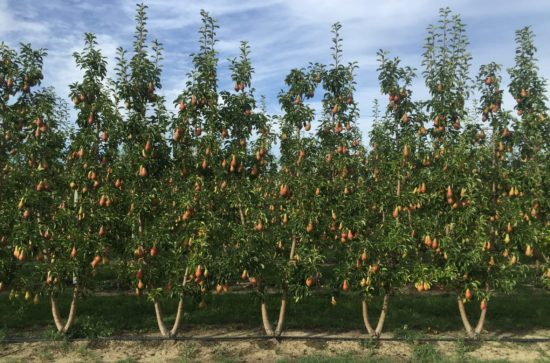
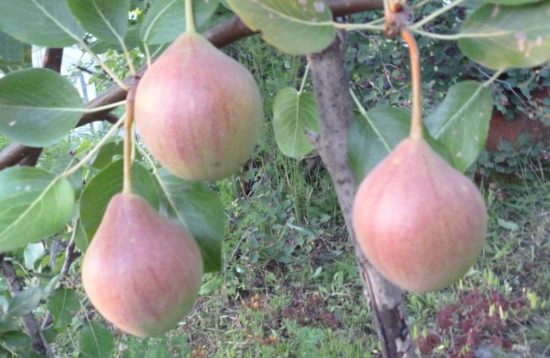
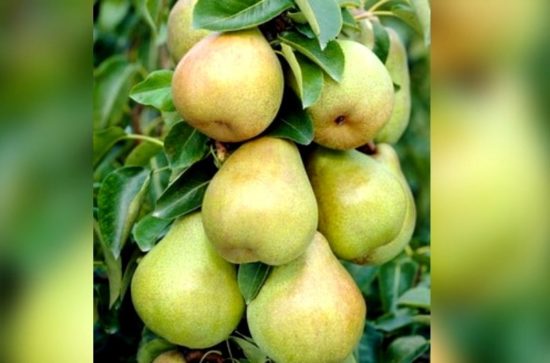
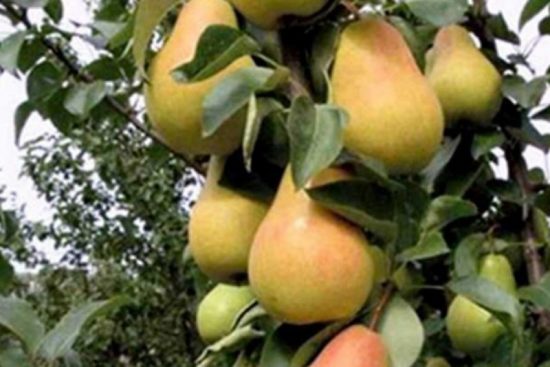
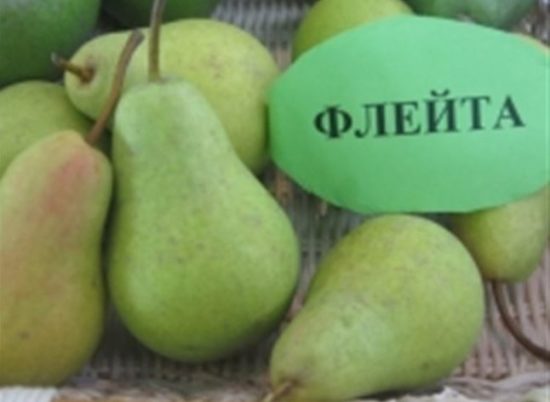
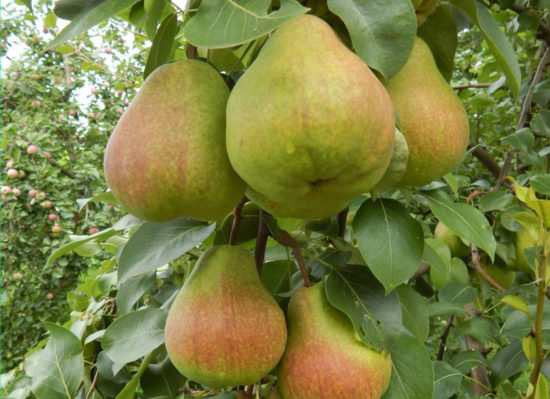
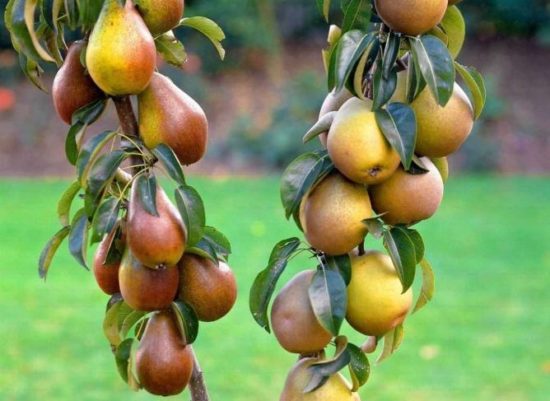

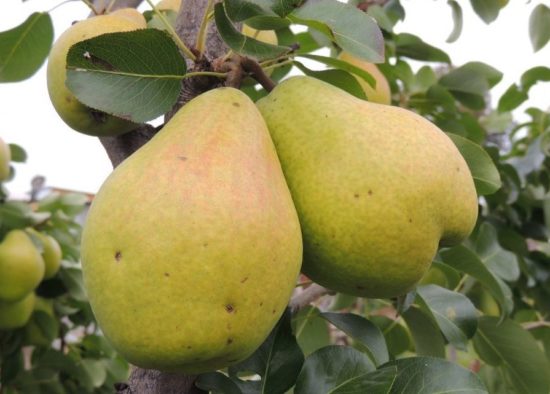
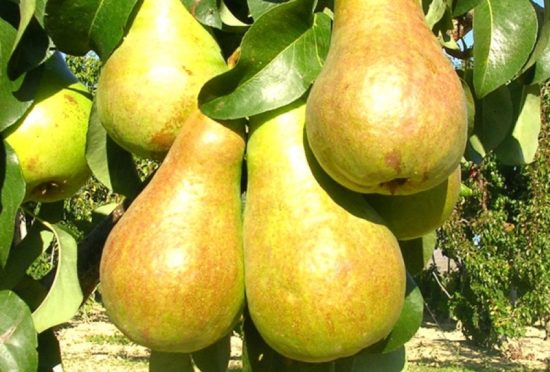
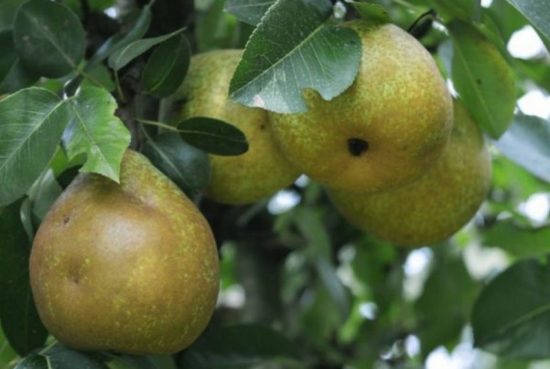
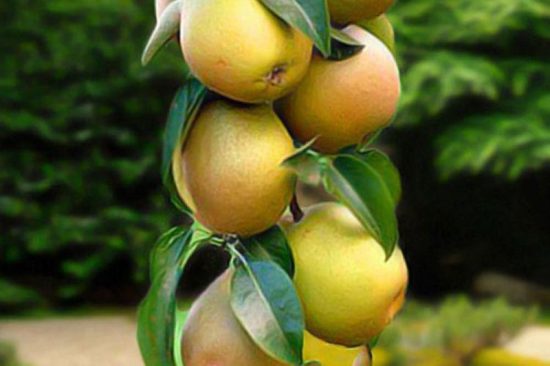
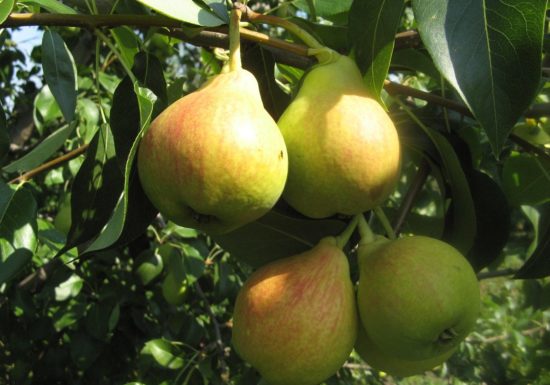
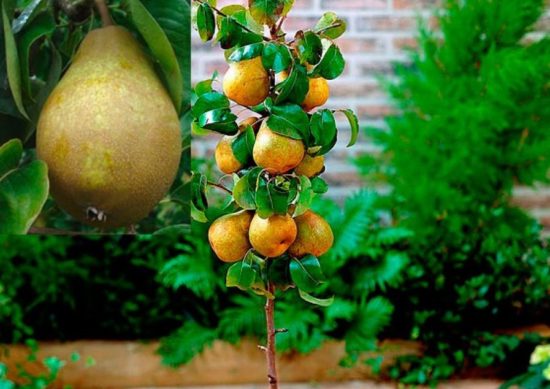


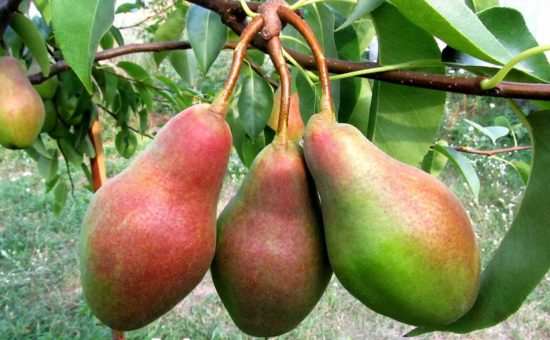
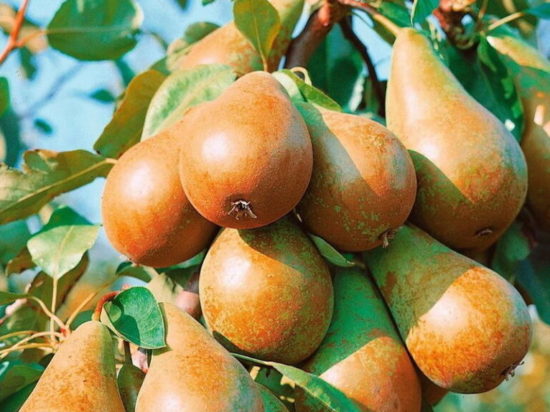
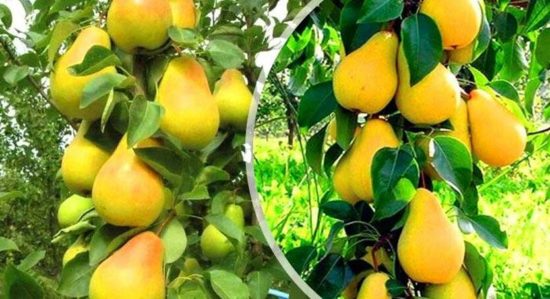
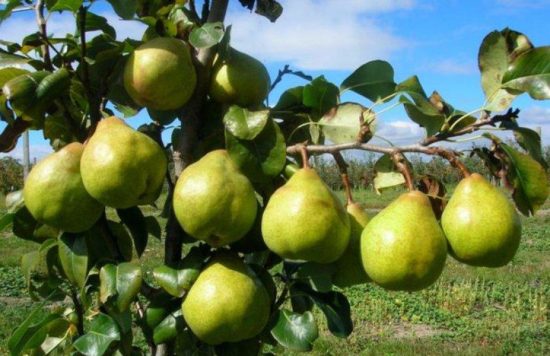
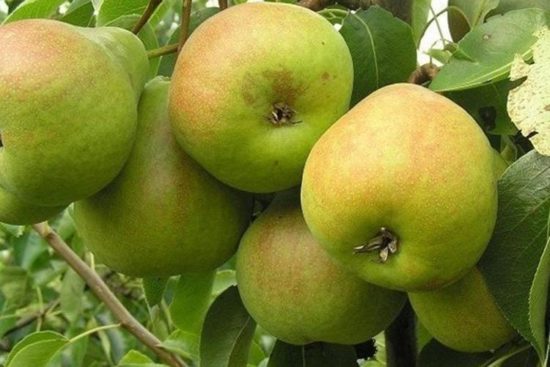
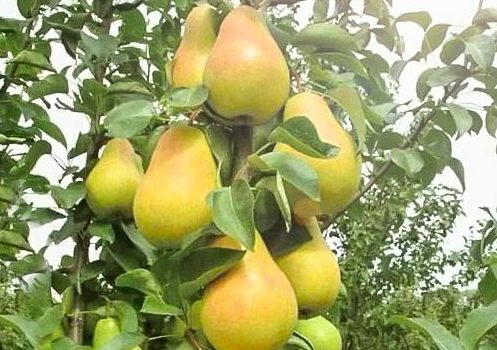
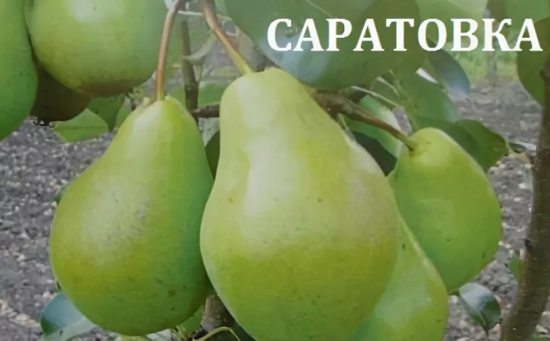


 CUCUMBERS NEVER GET SICK, I'VE BEEN USING ONLY THIS FOR 40 YEARS! I SHARE A SECRET WITH YOU, CUCUMBERS ARE LIKE THE PICTURE!
CUCUMBERS NEVER GET SICK, I'VE BEEN USING ONLY THIS FOR 40 YEARS! I SHARE A SECRET WITH YOU, CUCUMBERS ARE LIKE THE PICTURE! You can dig a bucket of potatoes from each bush. Do you think these are fairy tales? Watch the video
You can dig a bucket of potatoes from each bush. Do you think these are fairy tales? Watch the video
 How our fellow gardeners work in Korea. There is a lot to learn and just fun to watch.
How our fellow gardeners work in Korea. There is a lot to learn and just fun to watch. Eye trainer. The author claims that with daily viewing, vision is restored. They don't charge money for views.
Eye trainer. The author claims that with daily viewing, vision is restored. They don't charge money for views. A 3-ingredient cake recipe in 30 minutes is better than Napoleon. Simple and very tasty.
A 3-ingredient cake recipe in 30 minutes is better than Napoleon. Simple and very tasty. Therapeutic exercises for cervical osteochondrosis. A complete set of exercises.
Therapeutic exercises for cervical osteochondrosis. A complete set of exercises. Which indoor plants match your zodiac sign?
Which indoor plants match your zodiac sign? What about them? Excursion to German dachas.
What about them? Excursion to German dachas.